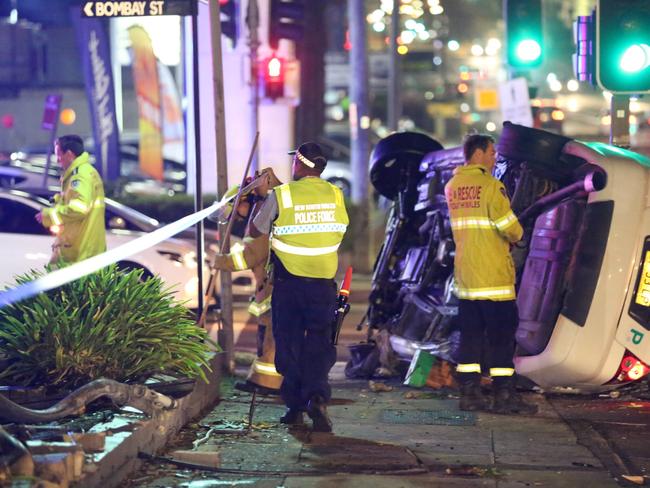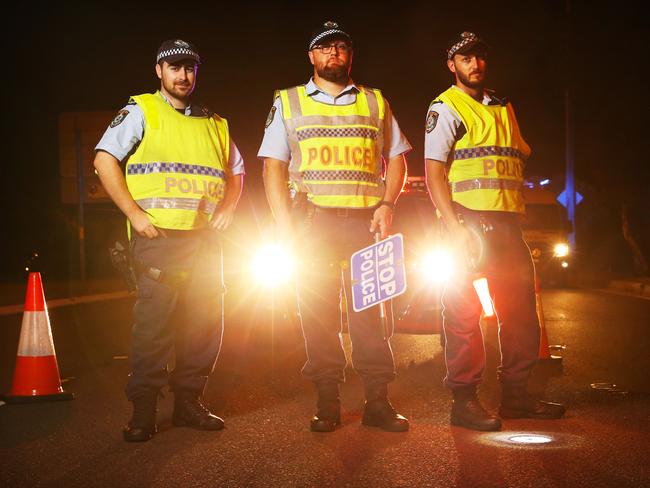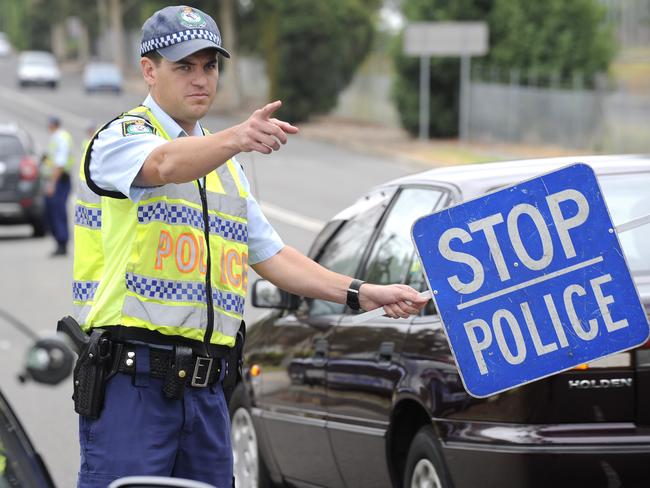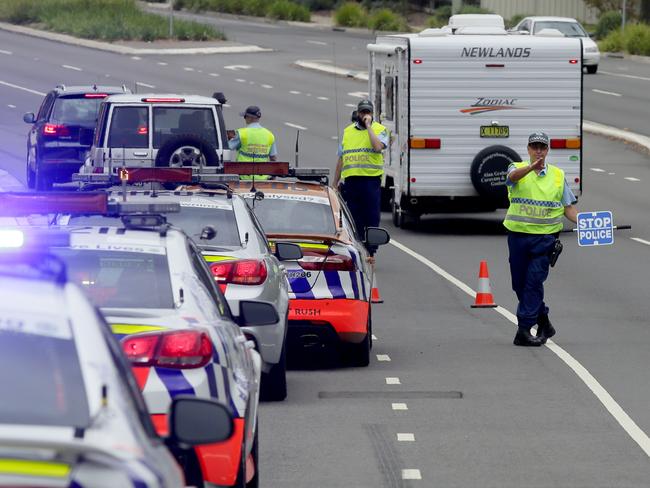Cops can breathe easy at RBTs — but drinkers beware
POLICE slashed the number of random breath tests in NSW by more than 1.2 million over two years to conduct a major review of safety for officers on the streets, The Saturday Telegraph can reveal. But they’ll soon surge again.
NSW
Don't miss out on the headlines from NSW. Followed categories will be added to My News.
POLICE slashed the number of random breath tests in NSW by more than 1.2 million over two years to conduct a major review of safety for officers on the streets, The Saturday Telegraph can reveal.
But commanders say RBT numbers are surging again following completion of the safety audit, and will hit six million tests by June 30.
Figures obtained by The Saturday Telegraph reveal RBT numbers declined each year since reaching a peak of 6,117,884 in 2015.

In 2016, 4,908,582 tests were conducted across NSW; in 2017 there were 4,898,088.
Assistant Commissioner Michael Corboy said the widescale safety audit was prompted by concerns about dangers posed to RBT officers as they stood on the side of the road or in traffic, waving drivers over to conduct the tests.
P-plate driver rolls car after allegedly driving off from RBT
It identified new procedures including conducting additional risk assessments for RBT sites and adjusting the distance officers stand from oncoming traffic.

The measures were introduced before senior constables Jonathon Wright and Matthew Foley were hit on February 16 by a driver who was allegedly distracted by his mobile phone.
Mr Wright had part of one leg amputated while Mr Foley suffered a fractured leg.
The improved safety procedures identified in the audit came into effect before the two officers were hit.
Mr Corboy said that the review has made the system more efficient and less dangerous, and that police were on target to hit more than six million RBTs by June 30.
Mirroring the decline in testing has been a rise in the road toll in the corresponding period — from 307 deaths in 2014 to 350 in 2015 and 380 in 2016.

Last year, 392 people died on the state’s roads.
Centre for Road Safety figures show drink driving was directly to blame for 45 deaths in 2014, 43 in 2015 and 51 in 2016.
The figures from last year are not yet confirmed.
While it is not possible to directly link the recent decrease in RBT numbers with the rise in road deaths, statistics clearly show fatal crashes involving alcohol have plummeted since tests were introduced in 1982.

“The number of roadside tests did drop for a short period of time while we carried out a review of safety, but we now have protocols in place that have not only increased safety but made testing more streamlined which means we can do more tests than we did previously,” Mr Corboy said.
“We are now on target to reach more than six million tests by the end of this financial year,” Mr Corboy said.
NSW Police Association President Scott Weber said the Lumeah incident was a reminder of the dangers that RBT officers faced.
